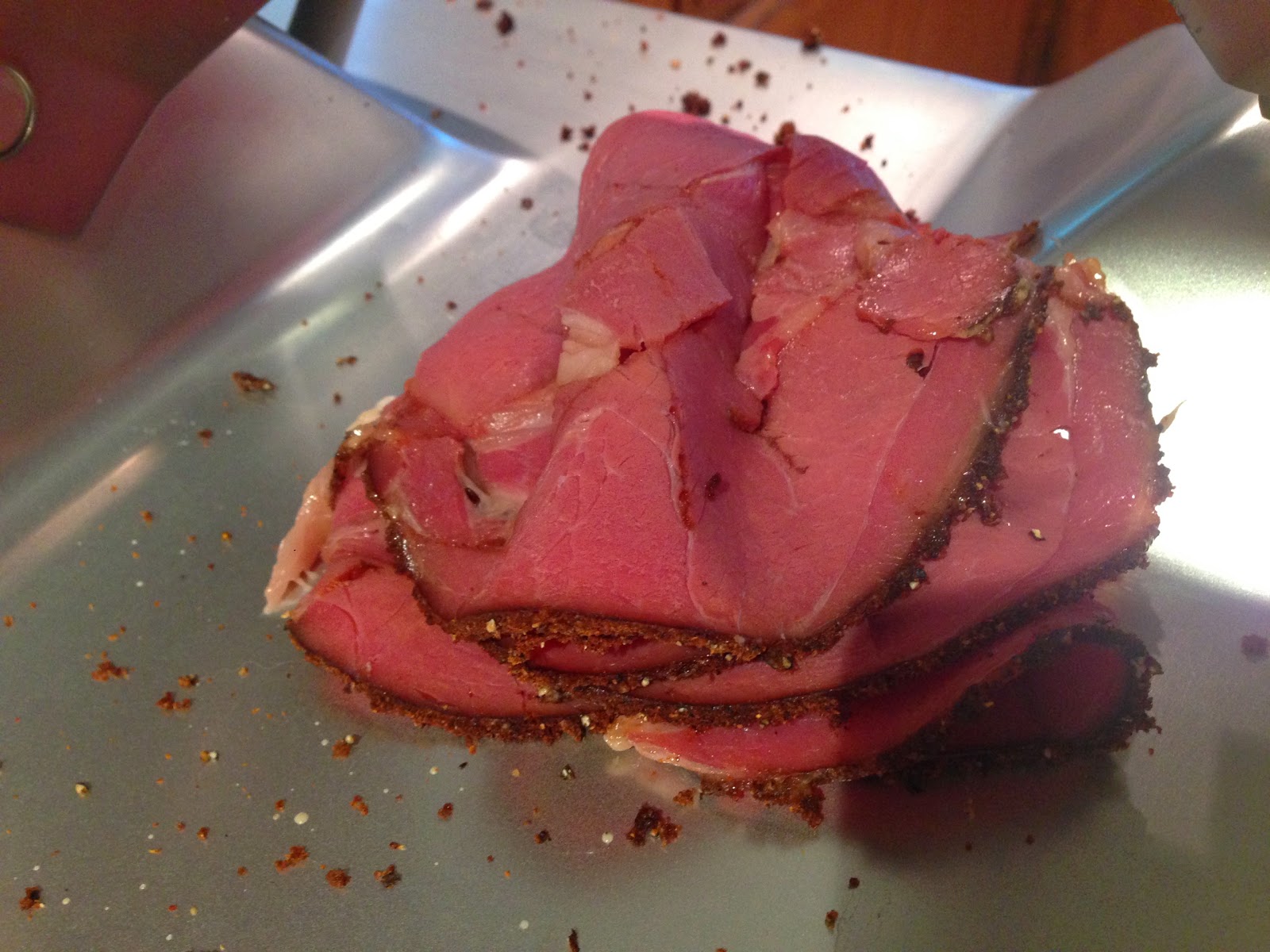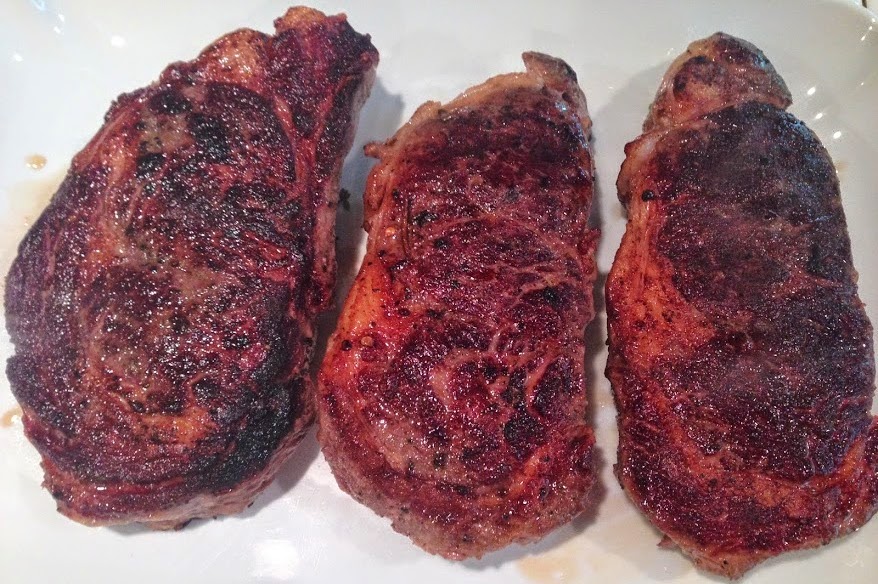 Spicy Ethiopian Lambstrami? What makes this dish Ethiopian are the traditional spices I am using namely Berbere. Berbere is a highly seasoned exotic spice blend that contains Korarima, Rue, Ajwain and Nigella and Fenugreek to name a few. These are just some of the ingredients. There are plenty more spices and ingredients that go into making authentic Berbere. I purchased the spice from Zamouri Spices. The ratings were above average so I gave them a try.
Spicy Ethiopian Lambstrami? What makes this dish Ethiopian are the traditional spices I am using namely Berbere. Berbere is a highly seasoned exotic spice blend that contains Korarima, Rue, Ajwain and Nigella and Fenugreek to name a few. These are just some of the ingredients. There are plenty more spices and ingredients that go into making authentic Berbere. I purchased the spice from Zamouri Spices. The ratings were above average so I gave them a try. You might be asking your self by now what is Lambstrami? Lambstrami is my made up name for a Lamb that is cured, smoked than tenderized using Sous-Vide. Pastrami is traditionally made from Beef but anything can be turned into a Pastrami and Pastrami just means cured meat.
I purchased my boneless leg of lamb from Costco. Costco carries this all the time and it's so convenient to have an idea pop into your head and have access to costco to buy what you want. The Lambs weighs 5.27 lbs or 2390.43 grams. I like using grams when calculating recipes because of the minute calculations that are required when using cures.
Here is a picture of the lamb with the netting removed.
Now butterflied opened with lots of slits in it to make sure spices and cures get deep into the meat.
I first combined salt and cure and rubbed it into every nook and cranny of the meat. I then mixed the sugar with the Berbere and did the same thing.
All vacuumed sealed and here it will lie for 8-12 days to cure. After the curing process is complete I will rinse off the meat and figure out a way to shape it into something that I can smoke. I am going to use Transglutaminase Activa RM to bind the meat together. I want the Lamb when folded together to become one solid muscle.
Transglutaminase, also called meat glue, is an enzyme that can be used to bind proteins to make uniform portions of fish filet, tenderloins, etc. that cook evenly, look good and reduce waste. Transglutaminase can also be used for creative applications in modernist cuisine such as making shrimp noodles, binding chicken skin to scallops or even making checkerboards with different types of fish. How can you do such a thing? Simply apply some transglutaminase on each side of the protein to bind, press the sides together and let it rest refrigerated for a few hours
Transglutaminase ‘meat glue’ was introduced into the modernist kitchen by Heston Blumenthal and is currently being used by some of the world best chefs such as Wylie Dufresne to:- Make uniform portions of fish filet, tenderloins, etc that cook evenly, look good, and reduce waste.

Cured and rinsed and
trying to figure out how to disassemble the Lamb so I can reassemble to form one piece.
As you can tell from the picture I cut a section off of the lamb and sliced it into long sections. I will reassemble this into one large muscle.
I am going to use Transglutaminase Activa RM to bind the meat together. That's the powdery stuff you see in the picture. I want the Lamb when folded together to become one solid muscle.
I think I did it.....
Using several layers of plastic wrap I tightly sealed and rolled the Lamb into a cylinder. It will take 24-36 hours to become one solid piece of meat.

After the bonding takes place I will apply the Berbere and a little Muscovado sugar to the lamb. This will be the outer coating of the meat. As you can see from the picture the meat has become one solid piece.
- Apply Spices and sugar and Cold Smoke
- Semi-Hot-Smoke at about 150-170 degrees for a couple of hours
- Sous-Vide at 142 degrees for 12 hours.
- Another thinlayer of spices
- Semi-Hot-Smoke to create a better bark.
- Slice very thin
 Spices applied. I cold smoked the lamb using apple pellets for 5 hours and hot smoked 150-155 degrees using apple also for 2 hours. I used several quarts of ice and water above the coals and wood to keep temp down. I did not want the internal temp of the meat to rise above 140 degrees. As you can see it came out perfect.
Spices applied. I cold smoked the lamb using apple pellets for 5 hours and hot smoked 150-155 degrees using apple also for 2 hours. I used several quarts of ice and water above the coals and wood to keep temp down. I did not want the internal temp of the meat to rise above 140 degrees. As you can see it came out perfect. The Temp out side was about 68 degrees. I used Apple pellets and the A-MAXE-N-PELLET-SMOKER. I filled the water reservoir up with a bucket of ice and water. I used old fashion charcoal and apple wood to smoke the meat and of course using my Smokey Mountain Cooker makes it easy. Temp fluctuated between 150-155 degrees. After 2 hours I pulled the meat off. Now getting it ready for 12 hour water bath.
 Submerged for 12 hours. The results are on the right. After 12 hours had passed I submerged the lamb into an ice bath to cool it off. Last step will be to Hot-Smoke under 200 degrees and form Bark/Coating. I will apply the Berbere, Sugar and Grains of paradise for texture. Will Hot smoke for 2 hours. After this step it will be ready for slicing and eating.
Submerged for 12 hours. The results are on the right. After 12 hours had passed I submerged the lamb into an ice bath to cool it off. Last step will be to Hot-Smoke under 200 degrees and form Bark/Coating. I will apply the Berbere, Sugar and Grains of paradise for texture. Will Hot smoke for 2 hours. After this step it will be ready for slicing and eating. After its long 12 hour bath its ready for the additional spices. So lets recap a bit. After its long 12 hour bath I gave it a 3 hour ice bath than refrigerated it for 24 hours. I wanted it ice cold before putting it back on the Smoker.
Grains of Paradise, Muscovado sugar and the Ethiopian spice all in place.
A two cook at 155-175 degrees using Apple wood. Again I used an ice basket below to keep temp down.
All done and ready for the slicer. Note: the additional cooking was to create a nice bark. Was it really necessary? no not really unless like me you want a bark.
A thing of beauty!!!!!!
SEE REVIEW BELOW...
My babies close up!!!!
Final thoughts: One word AMAZING!! One of the most tasteful unique foods I have ever made. I will not change a thing. Every step was perfect!!! The texture, the taste was to die for. Flavors not too pronounced or muted by the long Sous-vide process.
To recap all the steps to pull this off:
- Buy Lamb
- Prepare Lamb and get spices and herbs in order.
- Vacuum Seal and cure
- Rinse
- Fold and shape into desired shape
- 36 hour rest in cooler
- Apply Spices and sugar and Cold Smoke for 4-5 hours
- Semi-Hot-Smoke at about 150-170 degrees for a couple of hours
- Sous-Vide at 142 degrees for 12 hours.
- Ice bath for 3 hours
- Refrigerate at least 24 hours
- Apply another thinlayer of spices
- Semi-Hot-Smoke to create a better bark.
- Slice very thin




















.jpg)













































